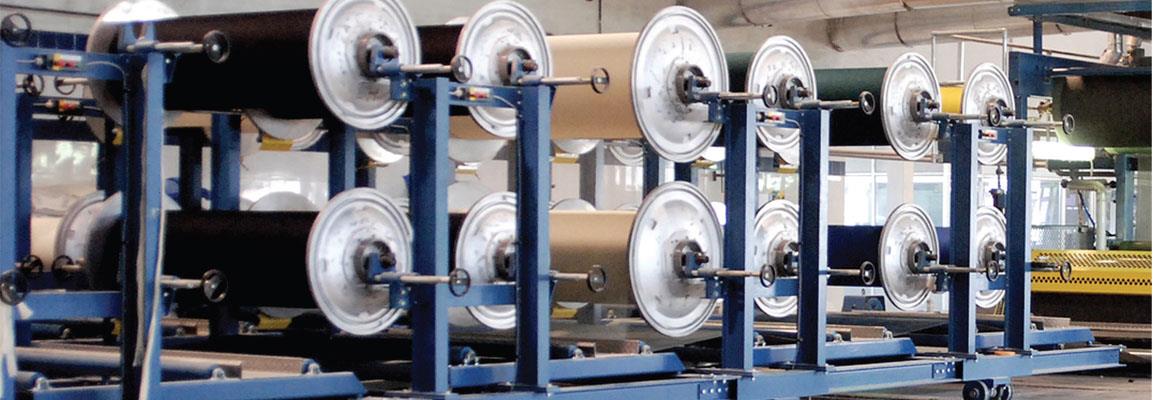The tiny cluster of Pallipalayam in Tamil Nadu is exclusively into viscose. It is also adversely affected because of the ongoing trade war between the US and China. Subir Ghosh reports.
The small town of Pallipalayam in the Namakkal district of Tamil Nadu has a population of just 40,000. But it is an important cog in the Indian textiles wheel: it is the largest cluster in the country that produces viscose yarn.
The Pallipalayam cluster has been into viscose from the very beginning- the late 1980s. The cluster has grown at a sedate pace over the decades, with growth shooting up in the last 5-7 years. Investments have doubled up from ₹2,000 crore in FY 2015 to ₹4,000 crore in FY 2020. It produces close to 80 per cent of the viscose spun yarn (VSY) in India-roughly 1,000 tonnes per day (TPD).
But all of a sudden, it has been hit by a bolt from the blue. The ongoing trade war between the United States (US) and China has been having a deleterious side effect on the business here. Volumes have been affected, and there has been a price drop too.
The Economics of Viscose
The cost of the raw material (mostly from Grasim Industries) is about ₹133.40 per kg. With a waste factor of ₹5.50, the effective raw material cost comes to about ₹138.90. After production and other cost components, the total cost of yarn works out to ₹190/kg. Since wastage is minimal, the volume of raw material used is close to the production volume.
With imported yarn available in the domestic market at ₹165, spinners are having to considerably undercut and sell at ₹170 so as to remain competitive in the domestic market. The result is that there is a straight loss of ₹20/kg. For a cluster that produces 1,000 TPD, this means a loss of ₹2 crore per day. This has been going on for more than two months now, and matters have come to a head.
Durai Palanisamy, executive director of the Pallavaa Group, provides the backdrop, "Because of the trade war, garment exports from China have been affected. They have huge spinning capacities, and with a reduced domestic consumption, they have been looking for big markets like India. Since the India market has been growing, Chinese producers have started dumping the yarn in India." This holds true also for Indonesia and Vietnam, who import the viscose fibre from China.
Unlike fabrics which are protected by a 20 per cent duty and fibres which have a total duty (including anti-dumping) of 18 per cent, yarns attract a customs duty of only 5 per cent. So, it is the viscose yarn manufacturers in India who are squeezed.
Therefore, VSY imports have been seeing a steep rise. From just 6 TPD in FY 2017, imports jumped to 54 TPD in FY 19. In the first quarter of this FY (i.e. April-June), it was 93 TPD. Since then, the figures have sky-rocketed: 170 TPD in July and 259 TPD in August alone. According to Palanisamy, VSY imports could well be 300TPD in September.
According to Karthikeyan Thangavel, director of V Thangavel & Sons Pvt Ltd, the influx of VSY is affecting the cotton sector as well. The price of 30s count cotton yarn is ₹175-180/kg, which is higher than the VSY price of ₹165/kg. "Lot of looms have shifted to viscose because it is available at a predatory price." A danger lurks here. Once the cotton and viscose spinning sectors are destroyed, the Chinese exports can very well jack up prices after four years and call the shots.
But reducing fibre prices will not help matters because China has been consistently devaluating its currency. Recently, the People's Bank of China (PBOC) had said that the slump in the yuan was driven by "unilateralism and trade protectionism measures and the imposition of tariff increases on China." The Chinese currency is not freely traded, and the government limits its movement against the US dollar. A weaker yuan makes Chinese exports more competitive and cheaper to buy with foreign currencies. This is apparently also being done to avoid inflation or reduce capital inflows.
The cluster, therefore, remains on tenterhooks, and is expected to bleed heavily during the festive season, which is the peak season for many factories here.
For all good reason, the spinning mills are vital for the value chain. Small weavers who cannot afford to import depend considerably on the spinners who offer 30-75 day credit. But if spinners cannot become any more competitive than they already are, weavers will look at alternatives.
Palanisamy can think of two possible solutions. The first can be to protect yarns either by increasing the customs duty or enforcing some other safeguard measures. The other would be to make fibres available at international prices. The latter measure may not help much since the difference between the international prices of ₹110/kg and that of the domestic availability of ₹130/kg is only ₹20. That would only offset the current loss of ₹20/kg.
Says Prabhu Dhamodharan, convenor of the Indian Texpreneurs Federation (ITF), "The world of fashion demands more blended products, and viscose is the preferred product. A healthy MMF sector, particularly the viscose segment, is crucial for export growth and competing with Bangladesh and Vietnam. Competitive prices are important for all sectors-yarn, fabrics and fibres.
"Tweaking of current import duties at all the three stages (fibre, yarn and fabric) may help in bringing basic safety from dumping to all the value chain manufacturers and it will help the sector to keep the prices also competitive. Being a structural issue, it's time for all stakeholders like fibre manufacturers, spinners and weavers to come together and approach the textiles ministry jointly to arrive at a win-win solution for everyone in the value chain."










Comments